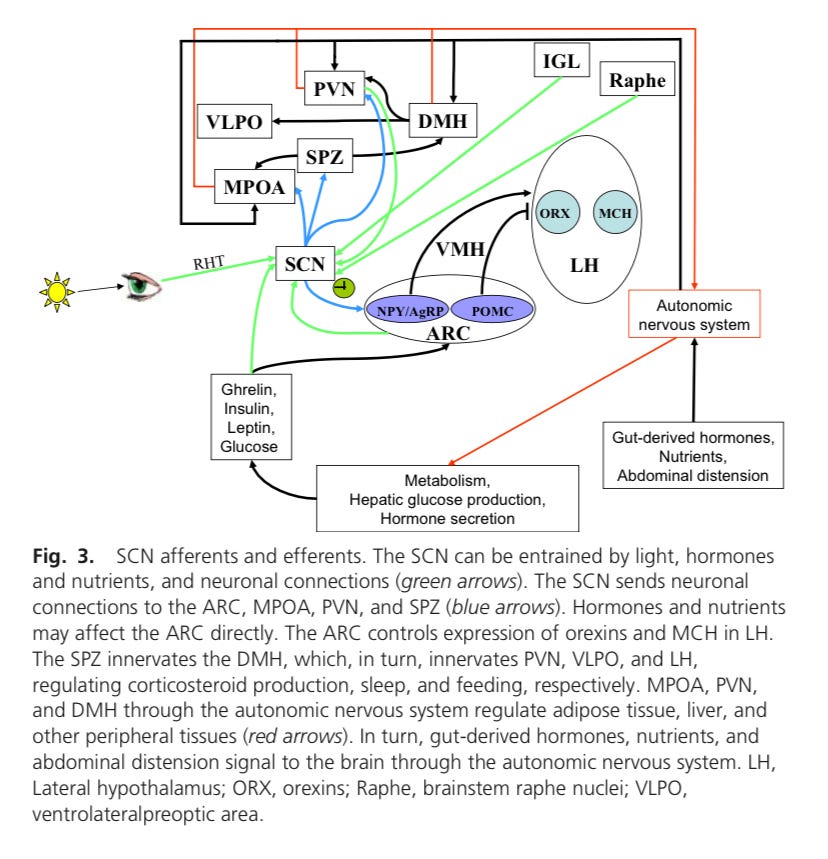Understanding the science of circadian rhythms.
Your environment controls your body's activity—here's how.
Hi,
This is a science-based newsletter, but at the same time, lifestyle is not science. So, what science do you need to understand for this circadian rhythm stuff to make sense? In today's post, I'm going to give an overview of the science of circadian rhythms.
This is the best graphic I have been able to find so far. It shows the 2 primary zeitgebers—that is, time-givers. Light and food. To be even more accurate, we could say the light/dark cycle and the food/fast cycle.
These alternations control what happens in the brain, which then control the body. What kinds of things do light and food control? Pretty much everything! But one example that is often used as a marker of overall rhythmicity is melatonin. Melatonin can only be synthesized in darkness. So, if you are like most in the US (99%), you experience so much light at night your body can't make enough mel…
Keep reading with a 7-day free trial
Subscribe to 🌞 Brighter Days, Darker Nights 🌚 to keep reading this post and get 7 days of free access to the full post archives.



